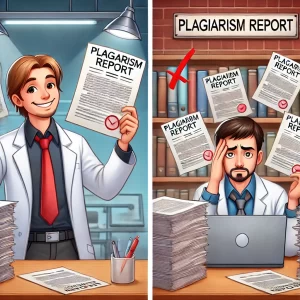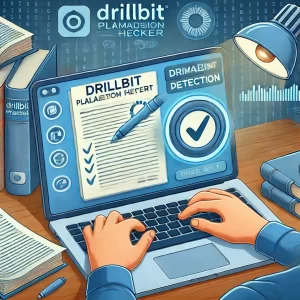
10 Common Mistakes That Lead to Unintentional Plagiarism and How to Fix Them
Unintentional plagiarism happens more often than you might think, often due to simple mistakes or misunderstandings about proper citation practices. While the consequences of plagiarism—intentional or not—can be serious, understanding the common pitfalls and how to address them can help prevent these issues. Here are ten common mistakes that lead to unintentional plagiarism, along with practical tips on how to fix and avoid them.
Failing to Paraphrase Properly
Improper paraphrasing is a frequent reason for unintentional plagiarism. Paraphrasing means expressing an idea using your own distinct language and structure. Simply altering a few words or rearranging the sentence is insufficient.
To fix it: Once you have read a passage, set it aside and attempt to summarize the main idea in your own words without referring back to the original text. Next, evaluate your version against the original to confirm that it is unique in both wording and format. Always ensure to reference the source, even when rephrasing the idea.
Using Common Knowledge Incorrectly
Common knowledge, such as widely known facts, does not require citation. However, many students mistakenly assume that information from specialized fields or specific studies is common knowledge.
To fix it: When in doubt, cite the source. A good rule of thumb is to ask whether the information can be easily verified in multiple independent sources. If it’s unique to a particular study, theory, or recent finding, include a citation.
Forgetting to Cite Sources for Paraphrased Ideas
Many students think that only direct quotes need citations, but paraphrased ideas require attribution as well. Failing to cite paraphrased material can result in unintentional plagiarism, even if the wording is original.
To fix it: Treat paraphrased ideas with the same level of caution as direct quotes. Always add a citation after paraphrasing an idea from a source, indicating that the information is not your original thought.
Relying Too Heavily on a Single Source
Over-relying on one source can lead to accidental plagiarism, as it might cause the content to mirror the source’s structure or argument too closely. This approach can make it difficult to create an original analysis.
To fix it: Diversify your research by consulting multiple sources. Aim to synthesize information from several perspectives, which will help you form a balanced, unique argument and reduce the chances of inadvertently mirroring a single source.
Misplacing or Losing Track of Sources
When gathering information, it’s easy to forget which source an idea or fact came from. This often happens when students fail to record source details, leading to unattributed information in the final draft.
To fix it: Use a citation management tool like Zotero, Mendeley, or EndNote to keep track of all sources as you research. Alternatively, maintain detailed notes with citation information for each fact or idea. This will help you accurately cite each source and avoid losing track of references.
Inadequate Citation for Images, Data, and Media
Many people focus on citing text and forget that images, charts, and data sets also require citation. Using visuals or data without attribution is a form of plagiarism, even if they’re publicly available online.
To fix it: Treat visuals and data like any other source. Note down the creator’s name, source, and publication date. Include this information in your bibliography or in the image caption if required by your citation style.
Inconsistent Citation Style
Switching between citation styles within the same document can lead to incomplete or incorrect citations, making it unclear which information is sourced. This inconsistency can also raise questions about the accuracy of the references.
To fix it: Choose one citation style (such as APA, MLA, or Chicago) and stick to it consistently. Double-check each citation to make sure it aligns with the style guide. Many word processors and reference tools offer style-specific templates to help you format citations correctly.
Using Automated Citation Generators without Verification
Automated citation generators can be convenient, but they are not always accurate. Relying on these tools without verifying the output can result in missing or incorrect information, which may lead to unintentional plagiarism.
To fix it: Use citation generators as a starting point, but always double-check each citation against a reputable style guide. Make sure that all required details are included, such as the correct author name, title, and publication date.
Self-Plagiarizing Previous Work
Self-plagiarism occurs when students reuse parts of a previous assignment or paper without disclosure. This can happen when students mistakenly believe they don’t need to cite their own past work.
To fix it: If you need to build on previous work, check with your instructor first. If you have permission to use it, cite the original work as you would any other source. This demonstrates transparency and respect for academic integrity.
Ignoring Quotations and Citations for Short Phrases
Sometimes, students assume that short phrases or partial sentences do not need quotation marks or citations. However, any text that is copied directly, even a few words, should be quoted and cited properly to avoid plagiarism.
To fix it: Always use quotation marks for direct phrases taken from a source, no matter how short. Follow the quote with a proper citation that includes the source, page number, or any other required details, depending on your citation style.
Conclusion
Unintentional plagiarism can happen easily, but understanding these common mistakes and implementing strategies to prevent them can help you maintain academic integrity. Developing effective research and citation habits, keeping track of sources, paraphrasing carefully, and consistently checking your work are essential steps toward producing original, credible work. By staying aware and taking preventive measures, you can avoid unintentional plagiarism and protect your academic reputation.


